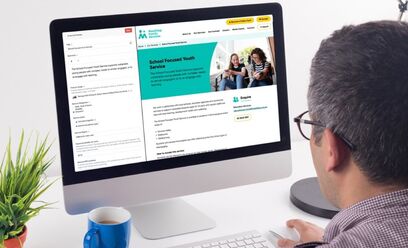‘If websites are not led by content, designs break, timelines stretch and users lose.’
— Matt Fenwick, True North Content.
Another year, another incredible four days at UX Australia. Two days of workshops followed by two days of conference presentations left us enthralled, inspired, and a little bit exhausted if we’re honest. As the name so obviously suggests, it was all about user experience and the value it delivers - both to a user and a business. Just like at Online Retailer, talk of chatbots and AI were hot with content strategy, content testing and UX writing in full focus. We heard about designing for conversational experiences, for cultural diversity, for children, for the purpose of wayfinding and more. We’ve managed to condense it all into our top three tips so you can focus on improving your website, app or product’s usability.
1. Learn quickly with lean research
‘The only way to win is to learn faster than anyone else.’
— Eric Ries, author of The Lean Startup.
Not to toot our own horn here but our very own UX lead, Yuan, presented about utilising lean UX methodologies to get ahead - even when you think you can’t. For over a year, the Yump team has been working with Studio Ninja, an online client management software system used and loved by thousands of photographers every day. A leading case study for us not just because of its success, but because it was one of those classic projects where you have limited time and resources.
What do you do when you have no budget and no time? You start lean and learn fast.
We know it’s tempting to just copy the best features out in the market, or simply take customer and client suggestions as facts. Trumping these elements though is research. Research will help you verify any assumptions about your users’ habits and preferences; you’ll be able to identify which features are most important to your highest-value users; and find a particular advantage where your competitors haven’t. The best way to do this?
Choose professionals
Work with a well-rounded UX team who can combine lean research and design into a fast, iterative process.
Keep it streamlined
Organise a consistent process of collecting ongoing user feedback, and give your UX team easy access to user interviews and testing.
Break it down
Allocate time for small amounts of research and prototype testing - as little as one week each - during the design and development process.
Iterate again and again
Ensure insights and learnings are continuously applied to design and development and are structured within periodic releases of new product features.

2. Pay attention to your interface content
‘Design in the absence of content is not design, it’s decoration.’
— Jeffrey Zeldman, web standards evangelist.
Seamless’ Content strategist, Rachael Mullins believes that “if careful design prevents problems before they happen, then careful content does too”. Her presentation explored the challenge of how we can use words to build better experiences, catering especially to non-writers. As they say, if you can pay someone to do something within your business to make your life and job a little easier, it’s priceless. So her first tip was to work with a professional UX writer or content strategist during the initial planning phase, and don’t forget the following:
Be ruthless
Edit smart and make sure every word earns its place on the screen. Remember, over 50% of users are now browsing on small, mobile screens.
Encourage efficiency
Ensure content is easily scannable by putting the most important words first and use sub-headings and lists to break up the content where possible.
Make it easy
Use plain language and keep it as succinct as possible. Speak to your customer in the same way they would speak to you.
Keep it real
Use real content in prototypes so you can test it with real users and revise accordingly. It might take more time upfront but will save you more in the long run.

3. Design for problem-solving instead of selling
‘90% of all consumers expect a brand or organisation to offer a self-service support portal or FAQ page.’
— Microsoft’s Global State of Multichannel Customer Service Report.
Despite setting clear customer expectations around a self-service experience, the current success rate using online self-service technology is only around 50% (Salesforce). However, once mastered, self-service can work wonders such as improving customer loyalty, raising brand awareness and lowering customer service centre costs – sounds like the dream, right? Maish Nichani, Principal of PebbleRoad, shared some key principles to designing effective self-service experiences, focusing on problem-solving and addressing customer needs. These are the four things he believes will help you get it right.
Focus on the customer
The self-service customer is often anxious and frustrated, so keep the marketing folks away. Instead, design with a focus on solving customer problems, rather than upselling, cross-selling or attracting sales.
Aim for effortlessness
Effortless resolution means ensuring all the information the customer needs, is easy to access in a small number of clicks, simple to understand and void of technical jargon, and offers no dead-ends, taking the user from the start to the end of the journey.
Keep the door open
Plan your resolution around a continuous user journey, making it easy for the customer to take the next steps of escalation with your customer service personnel.
Continue improving
Use a systematic approach to measuring success metrics such as customers’ use and satisfaction of the self-service experience, and the quality of content of your website’s knowledge base. Once these gaps have been identified, you’ll know where to start making improvements.









